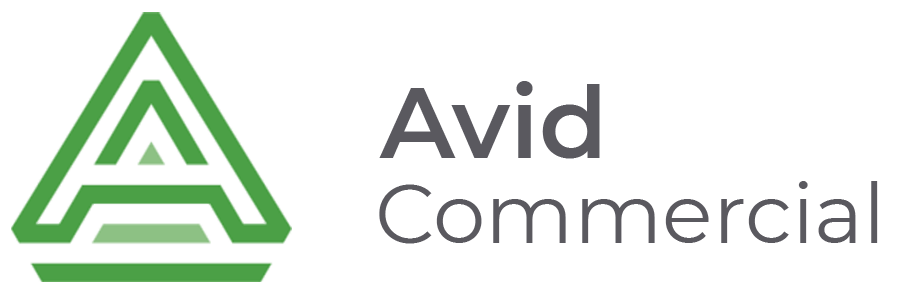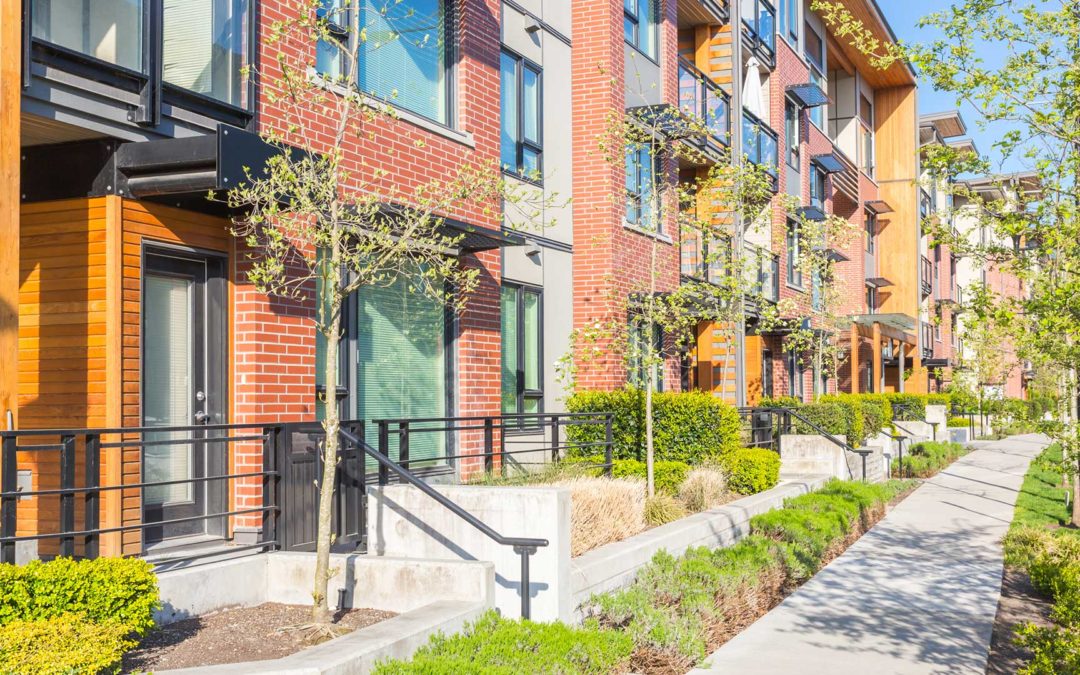What are Multi-family Home Loans?
Multi-Family Home Loans offer financing for the purchase of a multi-family property (small and large buildings with 2-4 livable units). Properties could also include condos, duplexes, townhouses, and other similar types of multi-family homes. There are four main types of home loan programs for individuals and investors who want to purchase or renovate a property with two or more units. Each type of loan has specific requirements, terms, and conditions. To figure out which kind of loan would best fit the needs of your multi-family property, consider all your available options.
Different Types of Loan Programs
There are four basic types of multifamily home loans. Some loans provide long-term financing, while others offer short-term financing. Each offers different rates and has unique requirements.
The different types of multifamily home loans are:
- Conventional mortgage – Terms run 15 to 30 years with 4% to 5% interest rates. This loan is a permanent, or “conforming” loan offered by banks and financial institutions. This type of loan is ideal for multifamily homes with 2-4 units, as well as up to 10 properties at once. However, the loan cannot finance properties with more than five units.
- Government-backed loan – Terms run 5 to 35 years with 3% to 6% interest rates. This loan is backed by Fannie Mae, Freddie Mac, as well as the FHA. There are five different loan programs to choose from that include property with less than five units and properties with more than five units. This loan is issued by a government-approved mortgage lender.
- Portfolio loan – Terms run 3 to 30 years with 3.7% to 5.7% interest rates. This is a nonconforming loan offered by banks, credit unions, and private lenders. These loan programs accommodate properties with both 2-4 units and 5+ units.
- Short-term multifamily financing – Terms run 1 to 3 years with 4% to 12% interest rates. Payments may be interest-free when making monthly payments. This type of loan is usually used to purchase a multifamily home before refinancing to a permanent loan. This loan comes in the form of a bridge or hard money loan.
When choosing a multifamily home loan, it’s necessary to consider the type of property you want to finance, the duration of the loan, and whether or not you meet the qualification requirements. Some types of loan programs offer different options depending on the number of units a property has.
All You Need to Know About Loan Requirements
Below you will find a list of qualification requirements for each specific type of loan.
Conventional loan requirements
Conventional multifamily loans start at $100,000 and have the following limits:
- 2-unit property: $533,800 – $800,755
- 3- unit property: $645,300 – $967,950
- 4-unit property: $801,950 – $1,202,925
These limits can vary, depending on location. The maximum loan to value ratio is 80%. This makes your initial down payment 20% of the property’s purchase price. Additionally, borrowers have to meet the following requirements:
- 2 – 4 Unit Building
- Property in “Good” Condition
- 680+ Personal Credit Score
- DSCR 1.25+
- 6 – 12 Months Cash Reserves
Government-Backed Loan Requirements
The minimum amount of this loan is $100,000. The maximum amount is set for specific-sized properties as follows:
- 2-unit property: $533,800 – $800,755
- 3- unit property: $645,300 – $967,950
- 4-unit property: $801,950 – $1,202,925
The three types of government-backed multifamily home loans all have different requirements and conditions. Qualification requirements vary, depending on the number of units in the property, the level of occupancy, and your credit score.
Fannie Mae Multifamily Loan Requirements
- 2 – 5+ Unit Building
- 85% Minimum Occupancy
- 680+ Personal Credit Score
- DSCR 1.25+
- 9+ Months Liquidity
- 3+ Months Stable Occupancy
Freddie Mac Multifamily Loan Requirements
- 2 – 5+ Unit Building
- 90% Minimum Occupancy
- 650+ Personal Credit Score
- DSCR 1.25+
- 9+ Months Liquidity
- 3+ Months Stable Occupancy
FHA Multifamily Loan Requirements
- 5+ Unit Building
- 95% Minimum Occupancy
- 650+ Personal Credit Score
- DSCR 1.15+
- 9+ Months Liquidity
- 6+ Months Stable Occupancy
Portfolio Loan Requirements
This loan usually starts at $100.000 and has no fixed maximum limit. The loan to value ratio is 97%, leaving borrowers with a down payment of 3%. Portfolio loans tend to be more flexible than other conforming multifamily loans. This loan requires the following:
- 2 – 5+ Unit Building
- 90% Minimum Occupancy
- 600+ Personal Credit Score
- DSCR 1.25+
- 9+ Months Liquidity
- 3+ Months Stable Occupancy
Short-Term Multifamily Financing
This type of loan provides financing for multifamily home renovations and also serve as temporary solutions before entering a long-term loan. Short term multifamily loans come in two forms. These are:
Hard Money Loans – These loans start at $100,000 and have no maximum limit. The maximum loan-to-value ratio is 90%. Qualifications are:
- 2 – 5+ Unit Building
- 2 – 3 Past Rehab Projects or Multifamily Experience
- 550+ Minimum Credit Score
- No Subordinated Debt
Bridge Loans – These loans also start at $100,000 and have no maximum limit. The maximum loan-to-value ratio is 90%. Qualifications are:
- 2- 5+ Unit Building
- 2 – 3 Past Rehab Projects or Multifamily Experience
- 640+ Minimum Credit Score
- No Subordinated Debt
- Required Interest Reserve for Properties Below a 1.05 DSCR
Hard money loans are an alternative to conventional mortgages that can be obtained quickly within 10-15 days. Bridge loans are temporary loans that borrowers often use as a down payment for a new home before they have sold their old home. A bridge loan takes slightly longer for approval, typically 15-45 days. Both types of loans offer solutions for borrowers who may not qualify for other types of financing.
Average Commercial Loan Rates
One of the last factors that help determine which type of multifamily loan is suitable for your situation is the rate. Commercial loan rates vary widely, depending on the loan type and duration. Below you will find information regarding loan rates of different multifamily loans.
Conventional loans
- 4% – 6% fixed or variable Loan Interest Rates
- 20%+ Loan-to-Value (LTV) Ratio Down Payment
- 0% – 3% Loan Origination Fees
- 2% – 5% Closing Costs
- Loan term 15 – 30 Years
- Time for approval 30 – 45 Days
Conventional loans account for the vast majority of all multifamily loans. However, those who want to finance a home with 5+ units are not eligible. This loan requires the highest credit score of all the multifamily loans. Those with lower credit scores will have to pick one of the alternatives.
Government-Backed Multifamily Loans
Fannie Mae and Freddie Mac Multifamily Loans
- 3% – 6% Fixed or Variable Loan Interest Rates
- 20%+ Loan-to-Value Ratio (LTV) Down Payment
- 0% – 1% Loan Origination Fees
- 2% – 5% Closing Costs
- 1% Prepayment Penalty
- Loan term 5 – 30 Years
- Time for approval 60 – 90 Days
FHA Multifamily Loans
- 3% – 5% Fixed Loan Interest Rates
- 13%+ Loan-to-Value Ratio (LTV) Down Payment
- 1% – 3% Loan Origination Fee
- 2% – 5% Closing Costs
- 1% FHA Inspection Fee
- 1% Mortgage Insurance Premium
- $10,000+ Legal Fees
- Loan term up to 35 years
- Time for approval 60 – 180 Days
For borrowers with good credit scores, a government-backed Fannie Mae loan may offer lower interest rates than a conventional loan. For those with slightly lower credit scores, the Freddie Mac loan could be a suitable solution. FHA loans have low down payments, but can take longer for approval and come with additional fees.
Portfolio Loans
- 4% – 6% Fixed or Variable Loan Interest Rates
- 3%+ Loan-to-Value (LTV) Ratio Down Payment
- 0% – 3% Loan Origination Fees
- 2% – 5% Closing Costs
- 1% Prepayment Penalty
- Loan Term 3 – 30 Years
- Time for Approval 30 – 45 Days
Portfolio loans have more flexibility than conforming multifamily loans and have the lowest down payments. Variable interest rates are fixed for 5 to 10 years before adjustment can take place. Borrowers will have to shop around for the best rates since loans are offered by all kinds of lenders.
Short-Term Multifamily Financing
Hard Money Loan
- 7% – 12% Varying Loan Interest Rates
- 10% Loan-to-Value (LTV) Ratio Down Payment
- 1% Exit Fee
- 1% Prepayment Penalty
- 1% Extension Fee
- 1% – 3% Loan Origination Fees
- Loan Term 6 Months – 36 Months
- Time for Approval 10 – 15 Days
Bridge Loan
- 4% – 12% Varying Loan Interest Rates
- 10% Loan-to-Value (LTV) Ratio Down Payment
- 1% Exit Fee
- 1% Prepayment Penalty
- 1% Extension Fee
- 1% – 3% Loan Origination Fees
- Loan Term 6 Months – 36 Months
- Time for Approval 15 – 45 Days
For properties in good condition, both loans can cover up to 90% of the Loan-to-Value (LTV) Ratio. However, for properties in poor condition, borrowers can expect to pay up to 25% of the property’s purchase price plus renovation costs.
How to Get a Multifamily Home Loan
This type of loan is best for those with good credit scores, who are interested in a long-term mortgage. However, this loan is only available for properties with 2-4 housing units. Approval time is relatively short, between 30 and 45 days, but borrowers will have to cough up a 20% down payment. Borrowers interested in a conventional loan can apply at any bank or lending institution.
For those who want to fund an apartment complex or property with 5+ units, a government-backed loan may be the best alternative. Down payments and loan interest rates are similar to conventional loans. Credit score requirements are the same for the Fannie Mae loan and slightly lower for the Freddie Mac and FHA loans. To apply for this type of loan, visit a government-approved lending agency.
Portfolio loans are more flexible than government-backed loans since they don’t have to conform to government regulations. Private lenders offer loans with down payments as low as 3%. This loan requires a lower credit score and can accommodate properties with 2-4 or 5+ units. Portfolio loans are available through all types of financial institutions.
Short-term multifamily loans are ideal for borrowers who want to make a down payment on a new home before selling their old home. Both hard cash and bridge loans can help finance a home until a permanent loan takes effect. These loans are available from hard money lenders.

